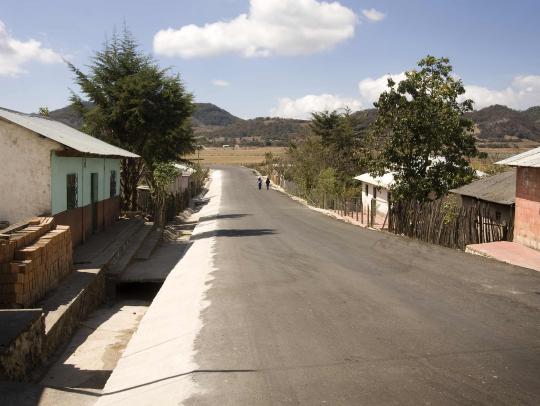The Road to Dubai: SES Perspectives on WRC-23

By Anna Marklund, Director, WRC Lead, Spectrum Management and Development, SES
At the 2023 World Radiocommunication Conference in Dubai, UAE (WRC-23), the International Telecommunication Union (ITU) will address several Agenda Items that will have a direct impact not only on SES’s ITU satellite filings and day-to-day operations, but also on its spectrum allocations and existing satellite service deployments at large.
Each of these Agenda Items have the potential to enhance development of important satellite services within a rapidly expanding space sector. As the world’s first operator of a multi-orbit constellation of satellites with the unique combination of global coverage and high performance, including the Medium Earth Orbit (MEO) O3b system, outcomes on topics addressed by WRC-23 are expected to shape SES’s business strategies in very tangible ways.
Several of the Agenda Items under consideration – whether directly or indirectly related to satellite-enabled applications – highlight the intersection between well-established uses of spectrum and emerging services in the satellite sector. At this year’s conference, we see great opportunities to clarify the regulations and foster a thriving and sustainable space environment that benefits all stakeholders while stimulating innovation for diverse applications.
Support for Satellite-to-Satellite Links
Under Agenda Item 1.17, WRC-23 aims to find a regulatory framework and define steps for implementation of satellite-to-satellite links in portions of the Ka-band. In preparation for WRC-27, proposals are being considered to expand the scope of study and deployment to also address satellite-to-satellite links in the C-band. Together these efforts will permit Earth observation and other space systems to relay data from satellites in LEO to satellites in higher geostationary (GSO) or non-geostationary (NGSO) orbits to ground networks, enabling these systems to receive greater amounts of data in real time. Projects that can leverage globally harmonized satellite-to-satellite transmissions are already underway, particularly for Earth observation. As just one example, GSO operators are working together with geospatial imagery service provider Planet Labs in one such mission for the U.S. National Aeronautics and Space Administration.
Harmonising Satellite Spectrum for ESIMs
At two prior WRCs, a regulatory framework was defined for the operation of Earth Stations in Motion (ESIMs) communicating in the Ka-band, for GSO space stations in Fixed Satellite Service (FSS). The exponential development of NGSO constellations over the last two WRC study cycles, which offer very high throughput and low latency to Ka-band satellite operations, brings a particular urgency to developing a framework for Ka-band NGSO ESIMs. Completion of an approach to global NGSO ESIMs in Ka-band under Agenda Item 1.16 will help ensure affordable connectivity to all ESIMs operations wherever they are located. The Global Satellite Industry Association (GSOA), a unified voice for the satellite industry, endorses the adoption of a global framework for the operation of NGSO maritime and aeronautical ESIMs while ensuring protection of allocated services. For future WRC-27 Agenda Items, GSOA and SES support the use of the Q/V band by aeronautical and maritime ESIMs communicating with FSS GSO and NGSO space stations to allow these satellite applications to keep pace with ever-increasing demand for satellite connectivity.
Optimisation of IMT/5G Services in C-band
SES generally encourages countries to make better use of existing International Mobile Telecommunications (IMT) identifications (for example, in the 2 GHz band, in the 3.4 to 3.6 GHz range, and in millimetre wave bands) and to target spectrum refarming and optimisation before moving to identify new spectrum. This approach for Agenda Items 1.2 and 1.3 is equally valid for IMT initiatives proposed for WRC-27 that target the full Ku-band. GSOA’s comprehensive analysis and position on these agenda items, particularly with respect to their impacts on FSS systems, provide clear guidance on WRC actions that will protect and preserve critical satellite services that cannot be provided as reliably, affordably or at all by other means.
Upholding Article 22 EPFD Limits
As both a GSO and NGSO operator, SES sees significant risk in disrupting well-established frameworks in ways that reduce the regulatory certainty underpinning current explosive growth in the sector. At WRC-23, Member States are going to be faced with a proposed agenda item for the WRC-27 that considers reviewing the Equivalent Power Flux Density (EPFD) limits that apply to operations of NGSO constellations. The EPFD limits established in Article 22 of the ITU’s Radio Regulations are the result of years of technical analysis through numerous study cycles and ITU conferences. These EPFD limits provide reasonable safeguards for GSO operators while facilitating NGSO deployments and investment. While there are multiple paths within the ITU for further promoting the development of competitive NGSO constellations, reviewing the EPFD limits at WRC-27 is not required to achieve this goal and in fact would put existing GSO services at risk of increased interference.
As we approach the start of WRC-23 in Dubai, SES looks forward to working cooperatively with satellite operators, industry stakeholders and regulators to ensure the continued success of satellite systems that are operating in both mature and novel modalities to connect our world.




